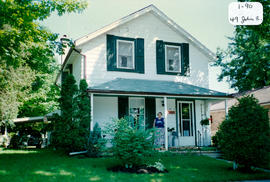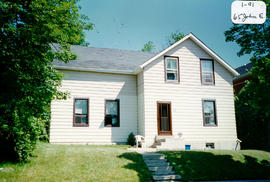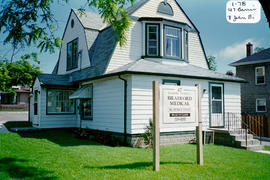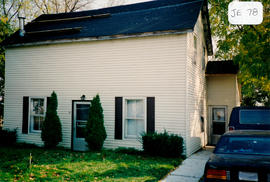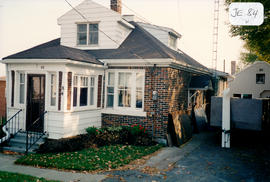- CA BWGPL GJ-HB-2017-04-04-09
- Item
- 1996
Part of George Jackson fonds
The mid-block structure located at 44 John St. East was built pre-1900 in Amsterdam (on the east side of the Holland River) in the Ontario Vernacular style. It was later moved to this site. This house was once the home of George Ogilvie, a tailor on Holland Street. He had moved here from Bond Head. After his death, it became the home of Dave Ogilvie and his family. When the house was remodeled, the bathroom was redone and stuccoed by Dick Saint, the carpentry work was done by Art Saint, the plumbing was done by Oswald Davey, and Ted Gapp did the wiring.
The two-storey, two-bay house has a rectangular plan with a side hall, an asymmetrical façade, and a medium-pitched, hip roof. An enclosed, entrance porch with a truncated, hip roof is raised slightly above grade. It has a single door and windows on three sides. The porch appears to be a later addition. The house has small window openings, double-hung windows (not original), and plain, wood trim and sills. Wood frame construction is covered with vinyl siding and there is a parged, stone foundation. The original cladding was probably wood. According to the 2000 inventory, the house has few building elements (other than the form) that appear to be original. It also notes that the house probably had few decorative details originally. (1, 2, 3)
George Jackson


